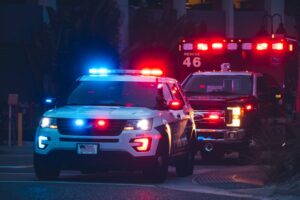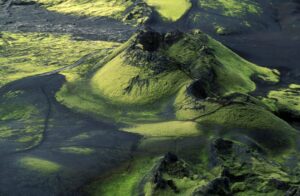It was wartime. World War I was still being fought. The death toll was 116 and damage costs four million dollars.
On the morning of October 11, 1918, Puerto Rico was visited by one of the most severe earthquakes it had ever experienced in modern times. It was later identified as having a magnitude of 7.5. The earthquake was followed, almost immediately, by a tsunami that broke upon the shore, drowning 116 people and destroying native huts. Property loss amounted to $4 million. In the northwestern part of the island, where the damage was greatest, a number of people left their dwellings and went to the hills, partly because of the unusual strength of the earthquake and partly because of the aftershocks that were almost continuous for two days.
The governor of Puerto Rico requested the secretary of war to investigate conditions throughout the island, to assess the damage and to assure everybody that the danger was over. An intensive one-month search of the territory was carried out, including the islands of Vieques and Saint Thomas. The epicenter was finally located deep in the northeast part of the sea passage between the island of Mona and the international border between Dominican Republic and Puerto Rico, a stretch of water known as Mona Passage. Everything that could throw light on the earthquake was carefully examined. The experiences and observations of a large number of persons were collected. Some of them had felt the shock in Santo Domingo and some had experienced the shaking on the Island of Vieques. The meteorologist in charge of the weather bureau at San Juan collected information for the investigating group through his many observers. Information was also gained through correspondence with persons where the shock was felt.
The earthquake occurred in daytime. Puerto Rico is accustomed to shocks of mild to moderate intensity and this may explain the close agreement that was discovered in descriptions of the shock. Most observers say that the earthquake began as a pronounced vertical vibration, which was followed by horizontal oscillations. In regard to the directions of movements, they were mainly east to west. The earthquake began suddenly without warning. There were no preliminary vibrations of any kind. Furthermore, no evidence of earthquakes of any kind had been felt over the previous eight months. The first shock was felt in San Juan shortly after ten in the morning. It lasted for a full two minutes, first as a series of vertical motions, accompanied by creaking of the timbers in wooden building, then latterly as horizontal shakings sufficient to cause nausea and evident in the swinging to and fro of electrical fixtures. A second shock followed about five minutes after the first one and a third one after a further five minutes. Both of these were of short duration, less than a minute each.
In some of the churches, as at Arecibo and Mayaguez, places that are one hundred miles apart, columns supporting arches between the nave and the aisles were crushed as though they had been subjected to strong vertical compression. At a house near Mayaguez, wooden columns supporting a porch roof jumped up and down, and after the earthquake a shoe was found between the base of the column and the floor of the porch. The tower of the Arecibo church was badly cracked and tilted toward the east. Nearby, a steel smokestack was bent in an easterly direction. The cracks in the brick roof of the municipal building ran chiefly in a north-south direction and, at a place four miles south of Arecibo, books in a concrete vault were thrown from the shelves on the northwest wall but not from the other shelves. At the southwest corner of Puerto Rico the surface of the ground moved in waves as if it had been part of the ocean.
A great wave from the sea, now understood as a tsunami, following the earthquake of October 11, was highest near the northwestern part of Puerto Rico. It was seen almost immediately after the earthquake. Wherever the wave appeared on Puerto Rico or on its neighboring islands, observers reported that the ocean first withdrew from the land, in places exposing reefs and stretches of sea bottom never before visible during low tides, and then the water returned, reaching heights that were high above normal. At some places the main wave was followed by one or more smaller ones and, especially in shattered bays, the water continued to ebb and flow for some time. At the Boqueron Lighthouse the keeper, who was up in the tower when the earthquake began, immediately started down the stairs, and as he went down he noticed that the water along the shore had already begun to recede.
It returned quickly and his measurements show that the height reached by the water, not counting the wash of the wave, was about fourteen feet above sea level. Southwest of the lighthouse, where the land is lower, the water was reported to have reached inland for a distance of three hundred feet into a grove of coconut palms. The lighthouse keeper had the impression that the wave came from the northwest. Near Point Agujereada the limestone cliffs are about 330–400 feet in height, and their base is a narrow strip of beach. Several hundred palms were uprooted by the wave, and the beach was turned into a sandy waste. In this vicinity a few small houses were destroyed and eight people reported to be drowned. People visiting this district soon after the earthquake estimated the height of the wave at eighteen feet.
As the seat of the disturbance was under the ocean it was impossible, in 1918, to determine its exact location, but it was estimated as being near latitude 18° 30′ north and longitude 67° 20′ west, or roughly ten miles west of Boqueron Lighthouse. The sea wave was highest along the northwest coat of Puerto Rico and decreased progressively in all directions. Submarine cables were broken at several places within the area bounded by parallels 18° 25′ and 18° 35′ north and meridians 67° 15′ and 67° 30′ west. The seismographic records of the earthquake do not fix the position of the origin with a high degree of accuracy.
This is not to be wondered at when we remember that an error of one second in the record time of arrival of vibrations at the various stations in eastern North America would correspond to a difference of six miles in the distance from the point of origin. The errors seem to have balanced because together they identified the location as being in the northeastern part of the Mona Passage. As has already been mentioned the limitations of the technology in use in 1918 are reflected in the reports that were given by observers. The interpretation of the cause of the earthquake is one example of these limitations: severe earthquakes are the result of the sudden relief of stress that slowly accumulated in the rocks on the sea floor.
The tsunami that accompanied the earthquake had a different origin. Research conducted on the ocean floor around the island of Mona many years after 1918 revealed underwater landslides that dated back to 1918. The small portion of the earth’s crust beneath Puerto Rico, in contact with the much bigger North American Tectonic Plate, was seen to have tilted at the point of contact, presumably due to interactions between the two. Gigantic slabs of limestone were released by these interactions, some of them as big as fifty miles wide, and the result of the displacement of water they caused gave rise to the tsunami. The damage it caused was greatest on the low-lying coastal areas and, as has so often been seen in the actions of tsunamis, the retreating wave because it carries so much debris and rocks is often more deadly than the first incoming wave. The Columbus Memorial stood on the western beach. It was demolished and a 2,500-pound limestone block from the wreckage was carried inland for more than three hundred feet. The island of Mona experienced the tsunami in the form of a twelve-foot wave that washed away a pier.





















